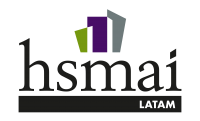Cómo explorar la segmentación de los micromercados, su papel en la industria hotelera y su poder para revolucionar el servicio al cliente y el marketing.
En la industria hotelera entender al huésped es fundamental. La segmentación del mercado es una de las formas más efectivas de lograr este conocimiento. La segmentación del mercado es un proceso estratégico que divide una amplia base de clientes en subconjuntos de consumidores con necesidades, intereses y prioridades comunes. Sin embargo, una segmentación amplia a menudo se queda corta en el panorama dinámico y competitivo actual. Para satisfacer verdaderamente las necesidades de cada huésped, es necesario profundizar en el campo de la segmentación de micromercados, afirma un estudio de Demand Calendar sobre el tema.
Aquí están los principales análisis:
Ventajas de la Microsegmentación:
- Marketing personalizado
- Mayor satisfacción de los huéspedes
- Estrategias de precios optimizadas
- Mejora de la eficiencia operativa
- Ventaja Competitiva debido a la oferta de experiencias personalizadas puede diferenciar a un hotel en un mercado competitivo.
PASO 1 – Comprenda la motivación para ser anfitrión
- Viajeros de negocios: estas personas generalmente buscan comodidad y eficiencia. Pueden apreciar comodidades como espacio de trabajo en la habitación, Internet de alta velocidad, registro de entrada y salida exprés y proximidad a centros de negocios o convenciones.
- Viajeros de ocio: suelen buscar relajación y experiencias únicas. Los viajeros de placer pueden valorar servicios como servicios de spa, actividades recreativas o la proximidad a atracciones turísticas.
- Asistentes al evento: los invitados que viajen a eventos como bodas, conferencias o festivales pueden priorizar ubicaciones cercanas al lugar del evento y valorar las opciones de reserva grupal.
- Viajeros en tránsito: estos huéspedes, a menudo en escala o en un viaje en curso, generalmente priorizan el fácil acceso, los horarios flexibles de entrada y salida y la comodidad esencial.
La motivación para viajar moldea significativamente las necesidades y expectativas de los huéspedes. Este conocimiento les permite adaptar sus ofertas y estrategias de marketing en consecuencia, atrayendo a los huéspedes adecuados y satisfaciendo sus necesidades.
PASO 2 – Conoce el origen de los viajeros
El origen geográfico de los huéspedes proporciona información valiosa sobre su origen cultural, situación económica e incluso hábitos personales, que pueden influir significativamente en sus expectativas y preferencias a la hora de alojarse en un hotel. Los contextos apropiados son los siguientes:
- Cultural: Algunas culturas ponen un fuerte énfasis en la hospitalidad y el servicio personalizado, mientras que otras pueden otorgar un mayor valor a la privacidad y el autoservicio. Esta comprensión le ayuda a adaptar su estilo de servicio para satisfacer las expectativas de los diferentes segmentos.
- Situación Económica: Esto influye en el presupuesto de viaje y las expectativas de un hotel. Los huéspedes de regiones más ricas pueden estar dispuestos a pagar más por comodidades y servicios de lujo, mientras que los huéspedes de regiones menos prósperas pueden priorizar la accesibilidad y la relación calidad-precio.
- Hábitos personales: las preferencias alimentarias, por ejemplo, están influenciadas por la cocina regional, los patrones de sueño se ven afectados por las diferencias horarias y los hábitos sociales están moldeados por las costumbres locales.
- Distancia recorrida: Los viajeros que vienen de más lejos tienden a permanecer más tiempo en un destino debido al tiempo y costo invertido en el viaje. Esto significa que es más probable que utilicen servicios hoteleros como lavandería, restaurantes y actividades recreativas. Los viajeros de corta distancia o escapadas de fin de semana pueden preferir hoteles que ofrezcan horarios flexibles de entrada y salida para maximizar su estadía.
PASO 3 – Segmentar los micromercados
El proceso puede verse como una estructura de árbol, en la que cada nivel representa una variable crítica que influye en el comportamiento y las preferencias de los huéspedes. Las variables son:
- Motivo del viaje al destino: el primer nivel del árbol de segmentación es el motivo por el que los huéspedes viajan al destino. Como se comentó anteriormente, esto podría ser para negocios, ocio, eventos, tránsito, etc. Esta razón informa muchas de las necesidades y expectativas básicas del huésped con respecto a su estadía en el hotel.
- Origen y duración de la estancia: a menudo influenciado por la distancia recorrida, puede afectar la forma en que los huéspedes utilizan los servicios y comodidades del hotel.
- Comportamiento de reserva: cómo y cuándo reservan los huéspedes. Esto puede incluir el canal de reserva (Directa, OTA, agencia, etc.) y el tiempo de entrega (early bird, last minute, etc.). De esta forma, es posible anticiparse a las necesidades y expectativas de los clientes y adaptar las estrategias de marketing y precios.
El futuro de la microsegmentación
- La expectativa de personalización: los hoteles que puedan identificar y responder individualmente a estas necesidades únicas se diferenciarán en un mercado competitivo. Este alejamiento de un enfoque único indica una creciente demanda de experiencias personalizadas y memorables que resuenen a nivel personal.
- El papel de la tecnología y los datos: los hoteles que puedan aprovechar e interpretar eficazmente los datos de los clientes estarán mejor equipados para comprender y satisfacer las necesidades específicas de sus huéspedes, lo que se traducirá en una mayor satisfacción y lealtad de los mismos.
- Mayor costo de adquisición de clientes: al comprender y satisfacer las necesidades específicas de los diferentes segmentos de huéspedes, los hoteles pueden aumentar su atractivo, aumentando las tasas de reserva y reduciendo los costos de adquisición.
El futuro de la industria hotelera reside en la personalización y la segmentación de los micromercados es un impulsor crucial de esta tendencia. Al aprovechar eficazmente la tecnología y los datos y comprender el panorama cambiante de la adquisición de clientes, los hoteles pueden perfeccionar sus estrategias de segmentación para lograr un enfoque más específico y eficiente.
Se trata de crear experiencias que tengan un impacto personal y, en última instancia, impulsen la satisfacción, la lealtad y el éxito empresarial de los huéspedes.



